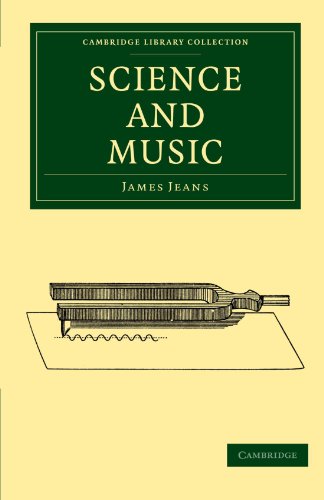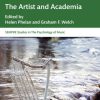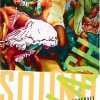(EBOOK PDF) Science and Music 1st Edition by James Jeans ISBN 0486139743 9780486139746 full chapters
$50.00 Original price was: $50.00.$35.00Current price is: $35.00.
Science and Music 1st Edition by James Jeans – Ebook PDF Instant Download/Delivery: 0486139743, 9780486139746
Full download Science and Music 1st Edition after payment
Product details:
ISBN 10: 0486139743
ISBN 13: 9780486139746
Author: James Jeans
Science and Music 1st Edition: Sir James Jeans, noted British scientist, has given a physical analysis of musical sounds, in what is considered to be the best exposition on the subject, a book of great intellectual stature. His aim has been to convey precise information, in a simple non-technical way, that will be of interest to the amateur as well as the serious student of music. The discussion begins with an explanation of the development of the human faculty of hearing. It is established that each sound can be represented by a curve. An examination of the general properties of sound-curves follows. For example, why do some sounds produce pleasure when they reach our ears and some pain? How do we retain the pleasurable qualities in the sound-curve, as it passes on from one stage of electronic equipment to another? To what extent is it possible to prevent unpleasant qualities from contaminating the curve? These and other pertinent questions on the transmission and reproduction of sound-curves are answered in a discussion of tuning-forks and pure tones. The various methods of producing sound, and the qualities of the sounds produced, are further discussed as they relate to vibrations of strings and harmonics, and vibrations of air. Harmony and discord are also considered. In the final chapters on the concert room and hearing, the discussion focuses on the transmission of sound from its source to the eardrum and from the eardrum to the brain. A general theory of acoustics is also covered as well as acoustical analyses. “Science and Music is a rare book, as an author does not often combine very distinguished scientific abilities with musical knowledge and power of simple exposition. It will probably become a minor classic.” — Manchester Guardian.
Science and Music 1st Edition Table of contents:
CHAPTER I – INTRODUCTION
- The Coming of Music
- The Sense of Hearing
- The Human Ear
- The Process of Hearing
- Sound-Curves
- The Transmission of Sound
CHAPTER II – TUNING-FORKS AND PURE TONES
- Pure Tones
- Period, Frequency and Pitch
- Frequency ratios within the octave
- Frequencies of tones from CCCC to cvi (c′′ = 512)
- Simple Harmonic Curves
- General Theory of Vibrations
- Simultaneous Vibrations
- Energy
- Simultaneous Sounds
- Superposing Vibrations of the same Period
- Loudness
- Interference of Sound
- Beats
- Difference and Summation Tones
- Forced Vibrations
- Resonance
- Sound Analysis
CHAPTER III – THE VIBRATIONS OF STRINGS AND HARMONICS
- Experiments with the Monochord
- Mersenne’s Laws
- The Free Vibrations of a String
- Waves travelling along a String
- Harmonics
- Nodes and Loops
- String Tone
- Harmonic Analysis
- String Plucked at its Middle Point
- Analysis of a Sound-Curve
- Natural Harmonics and Resonance
- Timbre and the Harmonic Analysis of Sound
- Harmonic Synthesis
- Plucked String
- Struck String
- Distribution of Energy between the various Harmonics of a String
- Piano Tone
- Relative Intensity of Harmonics (striking point one-seventh from the end)
- Bowed Strings
- Violin Tone
CHAPTER IV – THE VIBRATIONS OF AIR
- The Spring of Air
- The Vibrations of a Column of Air
- The Speed of Sound
- The Speed of Sound in Gases other than Air
- Refraction of Sound
- Air Vibrations in Music
- Whirlpools and Whirlwinds
- The “Wind Whistle”
- The Aeolian Harp
- Edge Tones
- Flue Organ-Pipes
- Stopped and Open Pipes
- Reed Organ-Pipes
- Orchestral Wind Instruments
CHAPTER V – HARMONY AND DISCORD
- Through Beats to Discord
- Concord associated with Small Numbers
- Euler’s Theory of Harmony
- D’Alembert’s Theory of Harmony
- Helmholtz’s Theory of Harmony
- The Origin of the Musical Scale
- The Problem of Temperament
- The Pythagorean Scale
- The Mean-Tone Scale
- The Equal-Temperament Scale
- Just Intonation
- Key Characteristics
- The Music of the Future
- More Complex Scales
CHAPTER VI – THE CONCERT ROOM
- The Transmission of Sound-Waves
- Reflection and Absorption of Sound
- Reverberation
- General Theory of Acoustics
- Acoustical Analyses
- Conditions for Good Hearing
- The Optimum Reverberation Period
- The Optimum Size of Orchestra
- The Ideal Concert Room
CHAPTER VII – HEARING
- The Threshold of Hearing
- Two Psychological Laws
- The Scale of Sound Intensity
- The Scale of Loudness
- The Threshold of Pain
- Tones created by the Ear
- Difference and Summation Tones
- Practical Uses of Difference Tones
- The Mechanism of the Ear
- Hearing in Animals
People also search for Science and Music 1st Edition:
computer science and music degree
data science and music
computer science and music production
computer science and music major
computer science and music double major
Tags:
James Jeans,Science,Music




